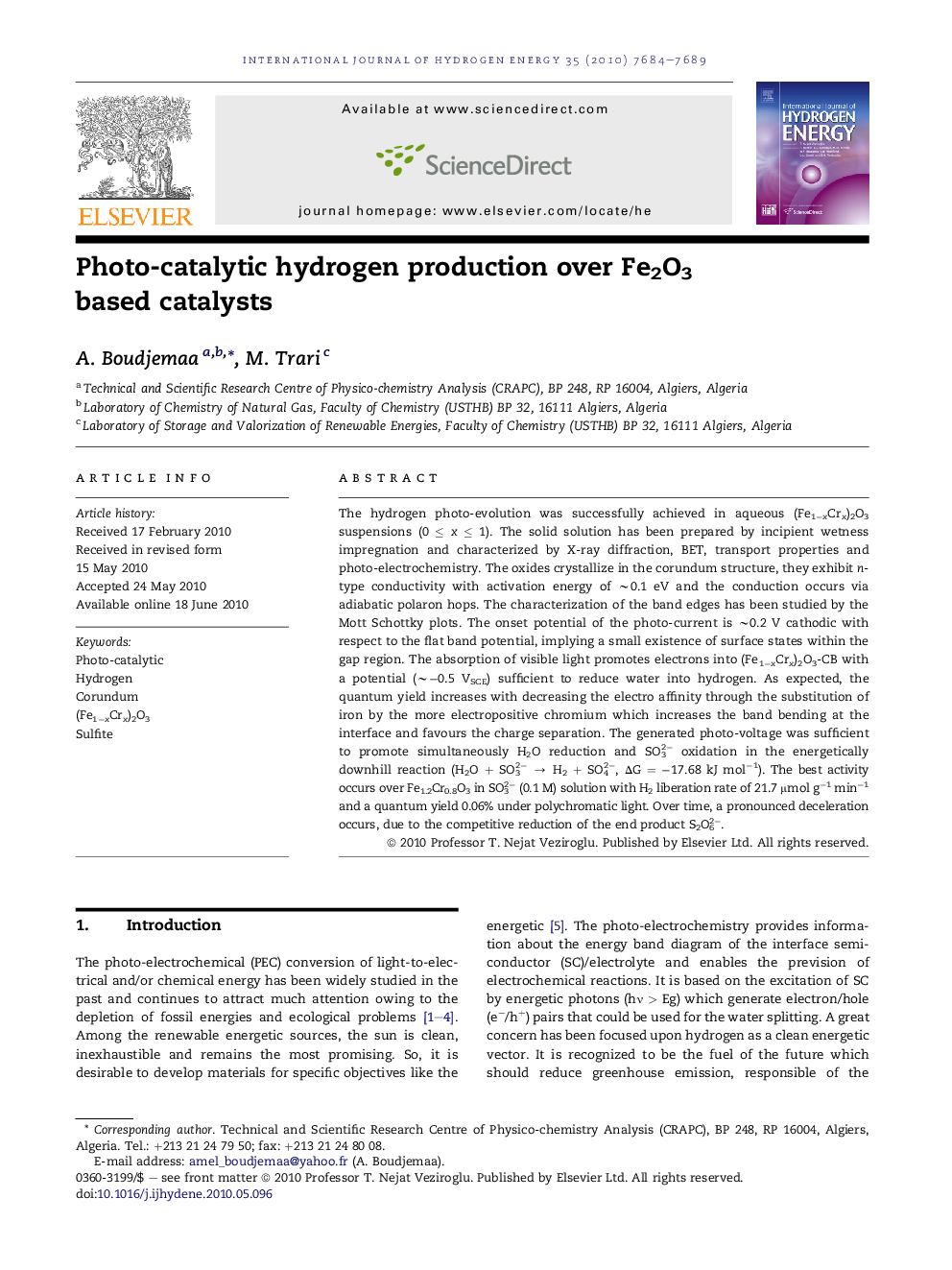| Article ID | Journal | Published Year | Pages | File Type |
|---|---|---|---|---|
| 1277942 | International Journal of Hydrogen Energy | 2010 | 6 Pages |
The hydrogen photo-evolution was successfully achieved in aqueous (Fe1−xCrx)2O3 suspensions (0 ≤ x ≤ 1). The solid solution has been prepared by incipient wetness impregnation and characterized by X-ray diffraction, BET, transport properties and photo-electrochemistry. The oxides crystallize in the corundum structure, they exhibit n-type conductivity with activation energy of ∼0.1 eV and the conduction occurs via adiabatic polaron hops. The characterization of the band edges has been studied by the Mott Schottky plots. The onset potential of the photo-current is ∼0.2 V cathodic with respect to the flat band potential, implying a small existence of surface states within the gap region. The absorption of visible light promotes electrons into (Fe1−xCrx)2O3-CB with a potential (∼−0.5 VSCE) sufficient to reduce water into hydrogen. As expected, the quantum yield increases with decreasing the electro affinity through the substitution of iron by the more electropositive chromium which increases the band bending at the interface and favours the charge separation. The generated photo-voltage was sufficient to promote simultaneously H2O reduction and SO32− oxidation in the energetically downhill reaction (H2O + SO32− → H2 + SO42−, ΔG = −17.68 kJ mol−1). The best activity occurs over Fe1.2Cr0.8O3 in SO32− (0.1 M) solution with H2 liberation rate of 21.7 μmol g−1 min−1 and a quantum yield 0.06% under polychromatic light. Over time, a pronounced deceleration occurs, due to the competitive reduction of the end product S2O62−.
